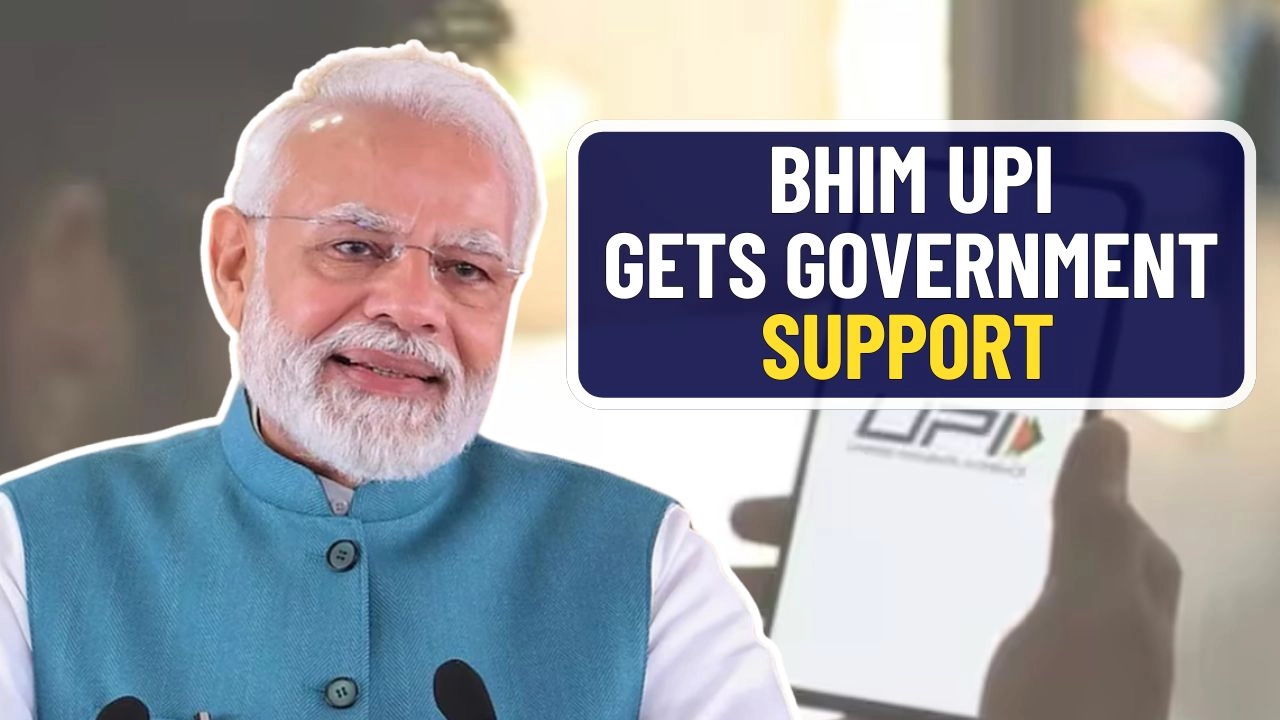In a strategic effort to reinforce India’s digital economy, the government has introduced a ₹1,500 crore incentive scheme for the 2024–25 financial year, targeting low-value BHIM-UPI transactions. This initiative is crafted to support small merchants across the country, with a goal to boost the reach and adoption of digital payments. As India continues to lead globally in real-time financial transactions, this scheme is another major step toward a cashless economy.
Making Digital Payments Affordable for Local Businesses
The scheme provides a dual advantage by waiving the Merchant Discount Rate (MDR) on UPI transactions while also offering a 0.15% incentive on payments up to ₹2,000 for small-scale vendors. This financial support is designed to make digital payments more viable for micro and small businesses, especially those operating in informal sectors. By eliminating transaction fees and rewarding usage, the government aims to foster an environment where digital payments become the norm rather than the exception.
Cabinet Approval Strengthens India’s Cashless Vision
The Union Cabinet, under the leadership of Prime Minister Narendra Modi, has officially cleared the Incentive Scheme for Promotion of Low-Value BHIM-UPI Transactions for the 2024–25 period. The approval of this scheme reflects the government’s commitment to inclusive digital financial systems. It aims to create an enabling framework where even the smallest vendors can confidently conduct and receive payments electronically through UPI, further advancing the mission of financial inclusion.
Promoting Digital Equality Through Policy Reforms

India has already made considerable progress in removing financial barriers for digital transactions. Since January 2020, MDR charges have been abolished for transactions made through BHIM-UPI and RuPay debit cards. These changes were implemented through key amendments in existing legislation such as the Payments and Settlement Systems Act, 2007, and the Income-tax Act, 1961. These policy reforms have laid the foundation for a more accessible digital transaction ecosystem.
Supporting the Wider Digital Payments Ecosystem
Beyond assisting merchants, the new incentive model supports various players involved in digital transactions. The financial rewards will be distributed among stakeholders like acquiring and issuing banks, payment platforms, and app developers. This approach is expected to stimulate further investment in the digital infrastructure, ensuring that the technology supporting UPI payments remains efficient, robust, and scalable.
Expanding Digital Reach to Rural Economies
Running from April 1, 2024, to March 31, 2025, the scheme targets UPI payments up to ₹2,000 and aims to extend digital payment access deep into India’s rural and semi-urban belts. With tools such as UPI 123PAY for feature phones and UPI Lite for offline usage, the initiative is focused on reaching tier 3 to tier 6 cities. The government hopes this expansion will bridge the digital divide and ensure even remote communities benefit from real-time payment systems.
Rising UPI Usage Reflects India’s Digital Momentum
The surge in UPI transactions over recent years is a testament to its growing acceptance. In FY 2019–20, UPI recorded transactions worth ₹21.3 lakh crore. Fast forward to January 2025, and this figure has reached ₹213.8 lakh crore, with person-to-merchant transactions accounting for ₹59.3 lakh crore. With this new incentive structure, the government is aiming to touch a milestone of ₹20,000 crore in low-value merchant transactions within the current fiscal year.
Reward Distribution Tied to Performance Standards
To ensure service consistency, the incentive payout structure incorporates performance-linked metrics. Acquiring banks will receive 80% of their eligible claims every quarter without any conditions. The remaining 20% will be awarded based on maintaining a technical failure rate below 0.75% and ensuring system uptime above 99.5%. This ensures not just financial support but also high-quality digital transaction experiences for users and merchants alike.
Strengthening the Foundation of a Cashless Economy
With this new scheme, small merchants stand to gain from faster, safer, and fee-free digital payments. As more businesses shift to UPI platforms, the broader ecosystem becomes more transparent and formal. Additionally, improved access to digital financial tools may eventually open doors for microcredit and formal lending for small business owners. The Indian government’s continued efforts signal a future where technology-driven transactions empower every corner of the country.



